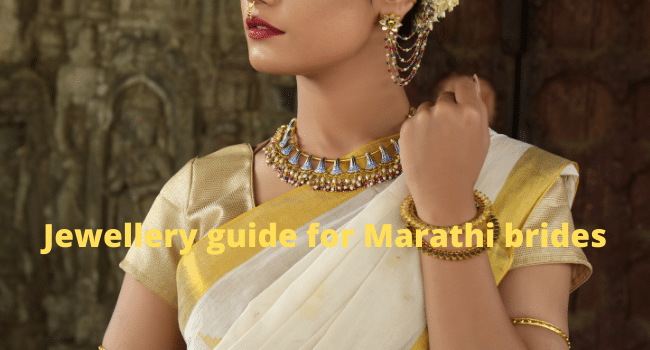Draped in the lavish nine yards of the customarily woven Paithani silk, having the pearl-strings of the Mundavlya (Maharashtrian marriage headgear) nimbly hanging from her temple, the Marathi bride enters her wedding mandap against the resonation of the heartfelt Mangalashtak.
Tentatively looking over the antarpath (a hallowed fabric held between the bride and husband to be during the wedding function), she strolls into the never-ending institution of marriage with her cherished one, under the shower of the Akshata ( rice grains representing success ) as the intense sound of ‘Shubh Mangal Savdhan’ reverberates against the set off of shehnais, tablas and dholkis.
Her marriage aura, despite the fact that uplifted by the peacock adorned Paithani for the most part in the shades of yellows, greens and purples, alongside her Shela ( an ornamented silk or velvet took folded over her arms) and her green glass ‘chooda’, isn’t completely finished without the brilliant hint of her conventional Maharashtrian gems, that is as exceptional to the land as is everything else about her! Gold jewellery has had traditional value since forever and has been worn by Marathi brides for centuries.
Here are a couple of conventional wedding ornaments remarkable to the way of life and legacy of Maharashtra.
Nath: The nath, albeit a typical nose decoration for ladies the nation over, is tiny bit contrastingly intended for Maharashtrian ladies. An interesting C-molded bended trimming, the Maharashtrian nath ordinarily has a gold base with pearls hung together around a splendid red ruby or white precious stone.
Thushi: A choker made of diversely measured gold dots put together over a work of brilliant strings, the Thushi is one of the most loved adornments of numerous Marathi ladies. Around 6-7 beaded lines woven together structure the traditional gold Thushi which can be additionally adorned utilizing valuable stones and jewels, according to the spending plan and feel of the lady of the hour.
Mohan Maal: The Mohan Maal is a layered beaded jewellery typically with a gigantic pendant in the middle portraying the sun. Each and every dot of the ‘maal’ or ‘accessory’ has many-sided hand-cut plans and the layers add a rich, exquisite touch to the lady of the hour’s outfit, making the decoration an indistinguishable piece of her marriage wedding linen.
Kaan: As the name proposes, the kaan is a weighty, complicatedly planned gold ear sleeve that covers the whole length of the ear and is frequently joined by the stunning jhumkas. Generally worn by the women of illustrious families, the kaan is presently cherished by ladies for it’s stunning majestic allure, despite the fact that it may here and there get somewhat heavier for the ears to hold.
Paatlya: The Paatlya are straightforward, level gold bangles with a little complex cutting set between the green chooda. Numerous ladies keep on wearing them after the primary wedding day, even after the Chooda is taken off , on account of their straightforward appearance and light weight. With the hiking gold rate per gram, they are also a good investment and can be worn otherwise.
Jodvi: The jodvi is a couple of silver toe rings that are skilled by the lady of the hour’s relative to her on the big day and is a significant piece of her ‘post-marriage’ lookbook! They are worn on the subsequent toe finger and are moderately straightforward when contrasted with different decorations worn by the lady of the hour.
Khopa: The khopa is a bowed hair adornment used to affix the customary hair bun. Much the same as the thushi and toe, the khopa is made of delightful, perplexing examples and is profoundly established in Maharashtra’s social history.
Read More on KulFiy:
